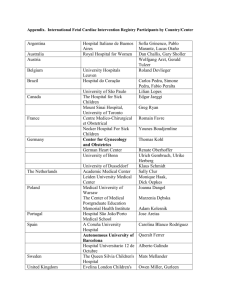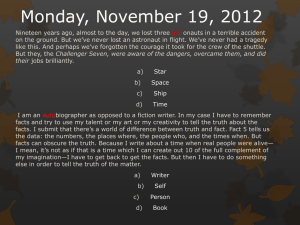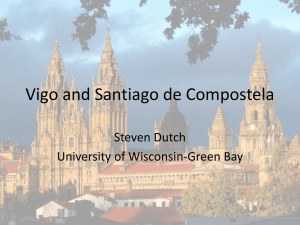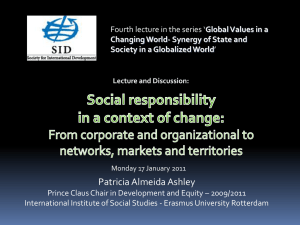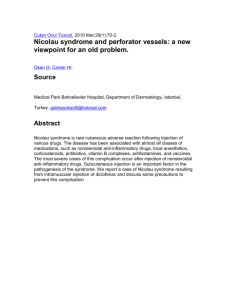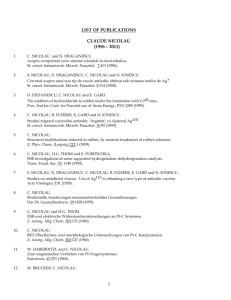Cape Verde - Greentours
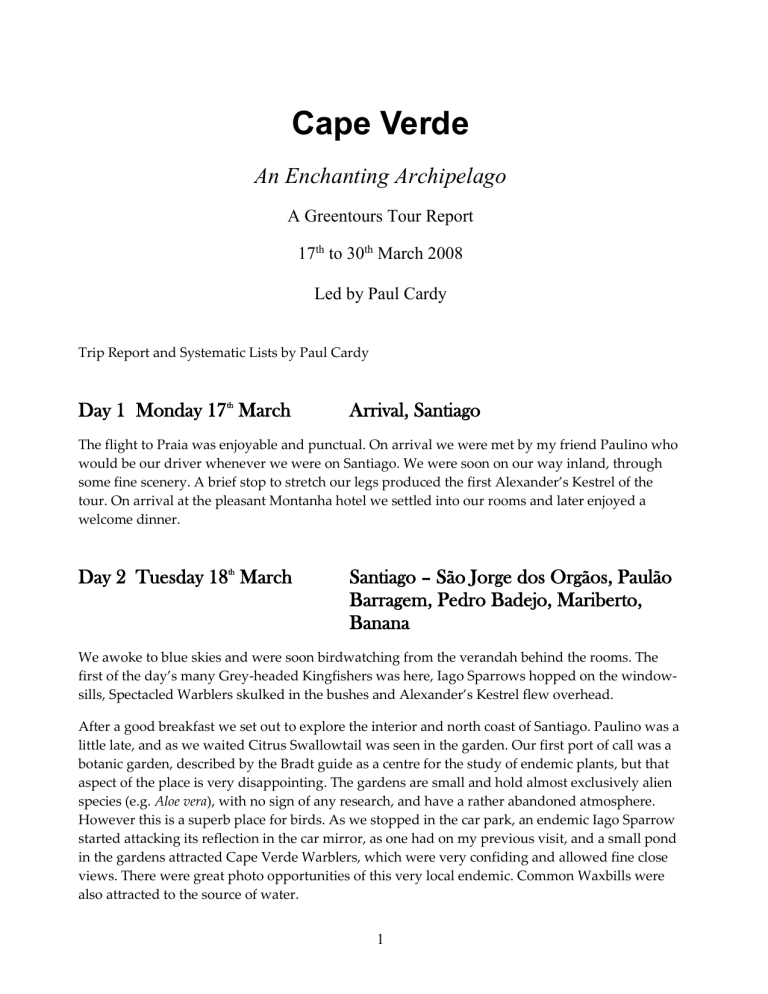
Cape Verde
An Enchanting Archipelago
A Greentours Tour Report
17
th
to 30
th
March 2008
Led by Paul Cardy
Trip Report and Systematic Lists by Paul Cardy
Day 1 Monday 17
th
March Arrival, Santiago
The flight to Praia was enjoyable and punctual. On arrival we were met by my friend Paulino who would be our driver whenever we were on Santiago. We were soon on our way inland, through some fine scenery. A brief stop to stretch our legs produced the first Alexander’s Kestrel of the tour. On arrival at the pleasant Montanha hotel we settled into our rooms and later enjoyed a welcome dinner.
Day 2 Tuesday 18
th
March Santiago – São Jorge dos Orgãos, Paulão
Barragem, Pedro Badejo, Mariberto,
Banana
We awoke to blue skies and were soon birdwatching from the verandah behind the rooms. The first of the day’s many Grey-headed Kingfishers was here, Iago Sparrows hopped on the windowsills, Spectacled Warblers skulked in the bushes and Alexander’s Kestrel flew overhead.
After a good breakfast we set out to explore the interior and north coast of Santiago. Paulino was a little late, and as we waited Citrus Swallowtail was seen in the garden. Our first port of call was a botanic garden, described by the Bradt guide as a centre for the study of endemic plants, but that aspect of the place is very disappointing. The gardens are small and hold almost exclusively alien species (e.g. Aloe vera), with no sign of any research, and have a rather abandoned atmosphere.
However this is a superb place for birds. As we stopped in the car park, an endemic Iago Sparrow started attacking its reflection in the car mirror, as one had on my previous visit, and a small pond in the gardens attracted Cape Verde Warblers, which were very confiding and allowed fine close views. There were great photo opportunities of this very local endemic. Common Waxbills were also attracted to the source of water.
1
Having finally gained the key to the toilet, Rob emerged shouting ‘Paul, spider!’. We all rushed over and crowded into the gent’s, including Paulino, to see a very impressive large and robust spider, perhaps a species of Tegenaria. Grey-headed Kingfishers were much in evidence. A few butterflies were on the wing, namely African Emigrant, Common Grass Yellow and Long-tailed
Blue. Nearby was a good viewpoint of Pico do Santo Antonio, the highest point on the island. A short drive north was a small, recently created, reservoir, or barragem, which has already become an important birding site, as any fresh water is important in these islands. Many egrets had already made this place their home, mostly Cattle, some Little, and a few Grey Herons. The highlight was surely two Bourne’s Herons, a critically endangered endemic (species or subspecies), of which only some twenty birds are thought to survive. Ringed Plover and
Greenshank were seen on the shore, Four Moorhens were here, an important find. Up until recently there was only one other record in the last thirty years, from Mindelo, of this former breeding resident. Glossy Ibis was another good record. As if that was not enough there were seven Spoonbill here, a rare winter visitor to the archipelago. Cape Verde Swifts sped overhead.
The small flowered viper’s bugloss relative here was Trichodesma africanum. Next we drove to the north coast, by way of several road works, along cobbled streets, and finding a small restaurant in
Pedro Badejo for lunch, which was superb, allowing us to rest in the heat of the day.
In the afternoon we drove east to a small and friendly French run pension set in a fine if a little exposed position on a headland. Nearby the rock pools and small lagoon had Turnstone,
Sanderling, Ringed Plover, Common Sandpiper, Greenshank, and Whimbrel. On my previous visit
I had provided some interest to an armed soldier guarding the beach against sand thieves. Later we visited the small settlement of Banana, where two mahogany trees support probably the last nesting population of the critically endangered endemic Bourne’s Heron, (or simply a subspecies of Purple Heron depending on point of view). There was no sign of the birds here today, nesting was obviously over this year, but at least we had seen them earlier in the day.
Back at the barragem we met Tony Clarke and the Birdquest group, coming to the end of their tour, who told me that visiting Raso and Branco was no longer permitted. Little Ringed Plover and
Snipe were among the birds noted on this second visit. Dinner at the hotel was excellent, and I managed to persuade them to serve us at the table rather than having to fight our way to the buffet!
Day 3 Wednesday 19
th
March Santiago to São Nicolau via Sal. Ribeira
Brava and Monte Gordo
We were up in the dark, Paulino arrived on time, and we were soon on our way to Praia airport.
Check in was busy with the Lisbon flight, so we had a short wait, and I marvelled at how several people had left it to the last minute to check in for an international flight! Anyway, for us check in was very straightforward, and the domestic departure formalities all very low key. Our initial flight to the barren inhospitable island of Sal took just thirty five minutes, and was smooth and punctual. The international airport on this featureless stoney island at least gave us the
2
opportunity for a snack breakfast, and I was able to change money. Amazingly Sal boasts many resort hotels, and this island is for many package tourists all that they see of this beautiful archipelago.
We were soon on the next flight, which was full, one girl carrying a very large cake-shaped food parcel on board. Landing at the tiny airport on São Nicolau was as always an experience, another barren island on first impressions, although mountainous. It was immediately obvious that fewer tourists come here. We were duly met by Tony (Toy) and once the luggage finally arrived, set off to the nearby town of Ribeira Brava, the island’s capital. Settling into our small family run hotel, on the quiet central square, we then enjoyed an early lunch of fish.
In the afternoon we drove to Monte Gordo, one of my favourite botanical sites on the island, passing impressive Dragon Trees along the way, a feature of this island. Neglected Kestrels were much in evidence. Toy drove us up a rough track as far as was possible until we reached a gate.
From there we walked a track up the slopes of the mountain, to a ridge, and down a narrow valley path back to the vehicle.
Initially dominated by many all too prevalent aliens (pines, eucalypts, Grevillea robusta etc.etc.), we soon reached fascinating vegetation with fine stands of the endemic Euphorbia tuckeyana. Many alien plants were still invasive here however, particularly Lantana.
On this short visit we saw no fewer than twenty two of the twenty eight endemics that occur on the mountain. Tornabenea insularis, supposedly scarce, was locally common. Umbilicus schmidtii was very rare here, with just a few growing on the ridge. More common endemics included Echium
stenosiphon, Campanula jacobaea (including one white form), Lavandula rotundifolia and Globularia
amygdalifolia. The attractive silvery leaved yellow flowered Nauplius smithii grows only on this mountain and was in superb flower today. Among the several other composites were Launaea
picridioides, Phagnalon melanoleucum, Conyza varia and a few Conyza feae. The ferns, bryophytes and lichens were very impressive.
Several Long-tailed Blues were on the wing. Having reached the ridge we had fine views down to the coast, and distant Raso and Branco islets. On the ridge was growing the endemic Campylanthus
glaber. Walking down a narrow, and steep in places, valley path we found several plants of the endemic poppy Papaver gorgoneum, but only in leaf, bud, and fruit, sadly none in flower.
Birds were again few, and only a small number of species is recorded from the area. Neglected
Kestrel, Iago Sparrow, Blackcap and Brown-necked Raven were seen, with the highlight a number of Helmeted Guineafowl seen well. I was particulary hoping to find again a scopariine moth, a small brown Pyralid that I had found here on my previous visit. The subfamily shows a high degree of speciation elsewhere in Macaronesia, but only one species is known from Cape Verde,
Eudonia lindbergalis, which was collected on Santo Antão on two dates only, in 1953 and 1954.
Either this was the same species found on a new island after more than fifty years, or more likely it is an undiscovered endemic species. Unfortunately although we did put up several moths, I did not see this species again this year.
3
Late afternoon saw us returning to the hotel and preparing for tomorrow’s adventurous boat trip!
Day 4 Thursday 20
th
March ‘Raso’ Boat Trip
The skies were somewhat ovecast as we enjoyed a very good small buffet breakfast at the hotel.
There were just a few people in the town square this time of day. Toy drove us the rather circuitous road down to Tarrafal. As the Brown-necked Raven flies it is not far between the two towns but due to topography the road winds for 26km down to the south-west coast through a fascinating variety of scenery, most notably the slopes of Monte Gordo where even along the roadside the wealth of endemic plants was hinted at.
Nearing the west coast the scenery became ever more barren, but the road is being upgraded, and a good paved section led us into town. Thankfully the sea was like the proverbial mill pond. Out to sea the islands of Raso and Branco really didn’t look too far away! After a brief café toilet stop we boarded the small vessel, the Pai Eterne, and were soon on our way.
The journey was initially beautiful, and I stood at the prow spotting things as we went. Flying fish punctuated the voyage, and we encountered two pods of dolphins, one certainly Common
Bottlenose Dolphins, but the others, not seen so well, were possibly another species. Cape Verde
Shearwaters became numerous, and accompanied us for the whole journey, allowing superb close views as they effortlessly sped around the boat. A few Macaronesian Shearwaters were noted too, their flight distinctly different from the commoner species.
The sea started to become a little choppy, and as we slowly approached Raso distinctly rough, as we held on as the boat careered in all directions, waves washing over the decks. All great fun, and as I maintain, if one keeps looking at the horizon, no seasickness.
As we neared the cliffs of the fascinating islet of Raso, the first Brown Boobys put in an appearance. Inshore the waters were again calm and we were soon admiring Booby and Red-billed
Tropicbird colonies on the southern cliffs.
For complex political reasons we had learnt that permits for landing on Raso were no longer being issued, and there was absolutely no chance of us being able to do so. Very frustratingly this has been a simple procedure up until just now, and we were almost the first to suffer from this decree.
So the Raso Lark eluded us. I spent much time up in the crow’s nest scanning the barren landscape for at least a glimpse of this incredibly local endemic, but to no avail. Our predicament was made more frustrating by the presence on the island of a team of researchers, here for two months, and we watched them going about their work, measuring and ringing Red-billed Tropicbirds, from the confines of our boat. Much more prosaic birds seen were Whimbrel, Brown-necked Raven and
Iago Sparrow. Crabs were active among the seaweed.
Our return journey was somewhat longer than expected as the crew started fishing, with a good degree of success, notably two spectacular Atlantic Bonito that were hauled in. The journey was
4
again rough, but we had become accustomed to the swell. As we neared Tarrafal the water became ever calmer. Cape Verde Shearwaters were still common.
Back on dry land we had a welcome sandwich and drink, before the journey to the hotel, tired and salt covered, but having had a very enjoyable and exciting day. A short stop was made to look at a hillside covered in the succulent Sarcostemma daltonii, however with no flowers. Dinner was an excellent feast of goat.
Day 5 Friday 21
st
March Monte Gordo and Tarrafal
Today, Good Friday, was a leisurely day with no boats, and no planes! A varied day began at 9 a.m., as we drove back towards Monte Gordo, stopping on route to look at some flowering
Sarcostemma that I’d spotted from the vehicle. At Monte Gordo we took a drivable track around the southern slopes, with fine views. The geology was interesting with at one point a fine stratum in the roadside cutting supporting a line of mostly endemic plants, including Diplotaxis gracilis and
Campanula jacobaea.
Neglected Kestrels and Brown-necked Ravens were again much in evidence. We left the vehicle and walked up a barren south facing slope, where Launaea picridioides was in good flower. The danaid Plain Tiger was on the wing. Having reached the ridge there was an amazing contrast, the north facing slope being green and comparatively lushly vegetated. We rejoined the track we had walked the other afternoon, and reacquainted ourselves with the many endemic plants growing along it. We found some fine Nauplius smithii in flower along a side track. Several skinks seen remain unidentified.
The pass was windy today, with again good views of Raso and Branco. A Kestrel with a lizard
(skink?) was seen. As well as the many Long-tailed Blues were a few Tiny Grass Blues. Back at the gate we met Toy and the vehicle and then headed down to Tarrafal where we enjoyed a very good fish lunch in a guesthouse. Turnstones were on the beach and an Osprey flew past. I took the opportunity to visit an internet café in town.
In the afternoon we drove a short distance north, to a small lighthouse, seeing a perched Osprey en route. Many Cape Verde Shearwaters were seen out at sea, and Whimbrel was noted along the shore. But it was the rock pools that were the highlight here, as we soon became fascinated with the wealth of miniature life they supported, a further aspect of the fascinating natural history of the islands. Small red anemones, tiny hermit crabs, beautiful small cowries, a species of sponge, and some fine small fish. Among the latter were: a silver species; a streaked silver species; a stunning iridescent royal blue one; one dark grey with a white vertical line; a stripey black and white species; and a camouflaged ‘stone loach’ type. Inland the desert terrain had a selection of bones.
Back at Monte Gordo it was cool and windy, but along the road we found two new endemic plants, the sowthistle Sonchus daltonii, and the caryophyllacean Polycarpaea gayi. Here were some fine robust poppy plants, again gone over or in bud! We looked down on the ‘old’ road to Ribeira
5
Brava, much more direct than the one we have to take, but impassable. Nearby was a small chapel, where along a track we had a vigil for Cape Verde Barn Owl, waiting for an hour at dusk, but sadly with no success. We travelled home in the dark and enjoyed another good fish dinner.
Day 6 Saturday 22
nd
March São Nicolau, via Sal, to São Vicente,
Mindelo. To Santo Antão & Pedracin
We left the hotel in Ribeira Brava at 8.30 a.m., driving to the small airport nearby for the 10.10 flight. The weather was fine. The flights are something of an event here and the tiny airport was busy. The plane was late which started to worry me about our connection time on Sal. Fortunately when we arrived on Sal, Cape Verde Airlines had everything under control and we were told to stay on the arrival bus, given printed tickets, and, after picking up the other passengers from the departure lounge, were driven back to the plane, the one we’d just got off! The crowd on this flight were much more touristy than those on the flight from São Nicolau. Today’s poet was Auden, thanks to Meg, to keep me amused during the flight. More fine views greeted us on arrival on São
Vicente and we were met by my friend Adilson. First of all we went to the water treatment plant near Mindelo, a well known birding site in the islands, where fresh water is so scarce. Cattle Egrets were numerous and the waders included Common Sandpiper, Greenshank, Wood Sandpiper,
Whimbrel, Little Stint and Grey and Kentish Plovers. This site was not as productive as is often the case, but we would have a chance to return another day.
In town we had a very enjoyable pizza, I changed some money, and Adilson bought the ferry tickets for us. The crossing to Santo Antão was very smooth, and perhaps consequently there was little wildlife to observe, not even a single flying fish. Still the locals were ill! One of the passengers was impressed that we had visited four different islands today! The views of the stunning mountainous Santo Antão became ever more impressive as we approached.
The port in Santo Antao was surprisingly hectic with the docking of the ferry, and there we were met by a driver, Avelino, a character, and learnt we had to share the vehicle with others. Not really a problem as there was little time for anything but getting straight to the hotel on the other side of the island. We set off across the trans-island road which afforded superb views back down to the coast and across to São Vicente. The cross island road was again cobbled and we bumped our way up to the central mountains. After 18km we reached the half way point and although much of the journey had seemed very barren we became aware of several interesting roadside plants.
Once over the pass the views of the ribeiras in the north were amazingly dramatic. After a fuel stop in Ribeira Grande we stopped to pick up the drivers entire family, and eventually continued to our hotel, the Pedracin Village, a quirky place, situated in a valley with fine scenery all around.
The rooms were good. Dinner was an interesting affair, and at least there was good wine.
Day 7 Sunday 23
rd
March Santo Antão, Pico da Cruz, Paul
After a good buffet breakfast in the hotel we departed at 8 a.m. Initially there was a fine mist, and the scenery became superb as we drove into the interior. The bird highlight of the day was an
6
Egyptian Vulture near Ribeira Grande, which I spotted from the vehicle, prompting a stop, and a piling out, this being a declining resident species. There followed a brief shop stop, and then several photo stops as the scenery became ever more impressive. At one wonderful viewpoint stop we found Campanula jacobaea in flower, and the delightful little Kickxia webbiana. (N.B. the
Sommerfeltia list gives only Kickxia brunneri as occuring in the islands, but in three subspecies, the nominate, dichondrifolia , and webbiana. I noted perhaps three forms at this site, with differing foliage. The ‘endemic plants’ booklet treats Kickxia webbiana as a full species.)
We took a beautiful side road towards Pico da Cruz, and walked back to the main road to meet the vehicle. Our walk along this quiet road was beautiful, with sunlight streaming through the trees, often fine views down both sides of the ridge, and rocky banks covered in ferns, mosses and liverworts. Neglected Kestrels, Iago Sparrows and Cape Verde Swifts were much in evidence. The endemic plants up here were excellent. In a short time we saw the pink flowered Echium
stenosiphon; the composites Artemisia gorgonum, Conyza feae, Launaea picridioides, Nauplius daltonii and Sonchus daltonii; Lobularia canariensis; the navelwort Umbilicus schmidtii; Globularia amygdalifolia;
Verbascum capitis-viridis; and Aeonium gorgonum. Looking down over a vertiginous ridge there was much Tornabenea bischoffii in fine flower. We could see the Paul track below us. A skink seen here was probably another endemic.
We drove back towards Ribeira Grande, stopping to admire the endemic tree Sideroxylon
marmulano along the way. There followed a stop for Nauplius daltonii, and some fine Campylanthus
glaber ssp.spathulatus.
The town was busy with Easter celebrations, and we found a small restaurant in which to have lunch, more fish! Here we kept the locals amused, and then headed east along the coast towards the town of Paúl. A coastal stop produced the endemic plants Limonium braunii and Frankenia
ericifolia spp.caboverdeana. The sea was calm, but repeated scanning revealed no birds or mammals.
In Paúl we drove up the Ribeira. This was a very lush place with mangos, breadfruit, sugar cane and bananas among the many things under cultivation, all irrigated with a system of water channels and tanks. Bougainvilleas and Jacarandas bloomed, and we found several pockets of natural vegetation, especially ferns, on damp roadside rocks. A pink evening primrose was
Oenothera rosea. This lush valley is understandably well populated, and was busy today, with several tourists too. Plain Tiger was on the wing, whereas on my last visit I had seen a Monarch, a vagrant here.
The day finished with another rock pool exploration, where we saw more anemones, small fish, sponges, and the highlight a beautiful leopard patterened sea slug, of which we found ten or so.
Dinner back at the hotel was again interesting, with good wine available.
Day 8 Monday 24
th
March Santo Antão, Val de Caibros, Garça de
Cima, Cruzinha da Garça
7
Remarkably, today we awoke to light rain, which was very refreshing, on an island of which 56% is classed as desert. After a tyre was changed on the vehicle we headed west along the valley from the hotel. First stop was in the attractive Caibros valley, where we drove up and walked down.
This was much more enjoyable than the Paul valley, and obviously sees almost no visitors. People were very friendly, and a young girl, Alicia, befriended us. Again there was a remarkable variety of crops under cultivation. We kept looking in vain for the endemic Carex species in what seemed like ideal habitat, but to no avail. Here were however some species of Cyperus, and Juncus acutus.
There was much Maidenhair Fern, possibly of more than one species.
A strange call was traced to a toad, and a chap working in the fields soon located one for us.
Rather a surprise here, this was the introduced Egyptian Toad, Amietophrynus regularis and the pools held many tadpoles. A brief stop was made at a domestic grog distillery (no samples!).
Back on the main road was some incredible scenery and more light rain. In the town of Garça, the driver’s village, were a few endemic plants including Lavandula rotundifolia and Phagnalon
melanoleucum. Here was another small scale still, amazingly powered by two donkeys walking in a circle. A highlight here was a Cape Verde Buzzard, which put in a brief appearance, and was then mobbed by a Brown-necked Raven. We waited some time for it to reappear, which it did not. This is now a very scarce bird here.
There followed an incredible drive down the Ribeira to the coast through dramatic scenery, and on arrival at the small fishing town of Cruzinha da Garça we were surprised to find a very pleasant small restaurant in which to have lunch, of………fish!
The afternoon was spent travelling slowly back, with several exploratory stops along the way.
Day 9 Tuesday 25
th
March Santo Antão to São Vicente. Mindelo,
Monte Verde, and Calhau.
Today we left the Pedracin under cloudless blue skies. Cape Verde Swifts and Iago Sparrows greeted me as I opened my windows. Avelino drove us once again along the beautiful cross island mountain road, no less impressive no matter how mny times one travels it. There were fine views today across to São Vicente, as well as Santa Luzia, Branco, Raso, and even as far as São Nicolau.
We reached Porto Novo in an hour and fifteen minutes, and there I bought the ferry tickets.
The ferry was busy today. The sea was again a mill pond, but amazingly sick bags were still handed out and many Cape Verdeans were ill for the whole journey. Remarkably only one flying fish was seen on this crossing, and no birds. The journey took well under an hour and Adilson was there to meet us at the Mindelo terminal. Luckily we were in no hurry at all, as for some reason check in at the hotel took an absolute age. What were they doing? I left the remainder of the morning free, and the group, armed with a map and a guidebook, set out to explore the old town.
Meanwhile, I visited the airline office to reconfirm all our flights, sorted finances, used the internet, etc.
8
We met for another very good pizza lunch at the hotel restaurant. After that we set out with
Adilson up the slopes of Monte Verde, not a very accurate name for this barren mountain.
However there were a good selection of endemic plants up here, once searched for. The highlight was a few large rosettes of Limonium jovi-barba. There were many Echium stenosiphon, and Nauplius
daltonii. The views from the peak were superb and I put the islet of Branco in the ‘scope! The soldiers at the military post pointed out Neglected Kestrels and a pair of Ospreys frequented the mountain slopes.
Back through town we headed to the north-east of the island, to Calhau. The coastal vegetation was here was dominated by Suaeda vermiculata, and none of the hoped for Limonium brunneri was found. Here were more rock pools and another Osprey. At a nearby beach we were distracted by a persisitent cheeping. Not an interesting endemic bird, but a duckling that a local was walking around with on his shoulder!
Back near Mindelo the beach supported Turnstone, Kentish and Ringed Plovers, Whimbrel, and
Sanderling, with a few rusting hulks of ships as a backdrop. The car would not start so we walked to the nearby sewage ponds. House Sparrow was added to the list. Among the waders here today were Grey Plover, Little Stint, Greenshank, Wood Sandpiper, Curlew Sandpiper and Ruff.. The smell was very strong here today and we got upwind of it as soon as we could!
We returned to the hotel to catch up with notes, or rest, before dinner.
Day 10 Wednesday 26
th
March Mindelo, São Vicente, to Praia, Santiago
We elected for a free morning today, to allow us to catch up a little with sleep. At 10.45 we went to the airport. As usual it was very windy here. The flight was on time and took only 35 minutes, TS
Eliot being the day’s poet. Paulino met us in Praia and took us into town where we ate lunch at a pavement café, having moved the table into the shade.
We returned to the Montanha hotel and settled in to different rooms this time. We drove to nearby
Monte Gamboa where I took a very windy walk along an exposed ridge, but saw little of interest, the vegetation being very parched. On my previous visit I had found the endemic Centaurium
tenuiflorum ssp.viridense here. Today we saw only the widespread Euphorbia tuckeyana. Several burrows in the earth banks were puzzling, Grey-headed Kingfishers?, skinks?, and there were various insect remains in them. The views were excellent.
Back near the car some soldiers who were guarding the mass of communications towers up here invited us into the compound to see the views. Instead of suspicion towards foreigners wandering around with binoculars they were very friendly. The views down to the north coast and across to
Pico do Santo Antonio were indeed fine. Last year I had seen a troop of five Mona Monkeys cavourting on the slopes below, but none today. I am unsure of the origin of this west African species on the island, but they are apparently quite widespread here. The pellitory like Forsskaolea
procridifolia was growing here.
9
Next we returned to the small barragem in the north that had been so productive on our last visit.
Here again were Moorhen and the seven Spoonbills. Many Cattle Egrets and a few Grey Herons were coming into roost but sadly no Bourne’s Herons were seen today. One adult and an immature Black-crowned Night Heron were an addition to the list. Black-winged Stilt, Common
Snipe, Redshank, Greenshank, Wood Sandpiper and Common Sandpiper represented the waders.
Common Waxbill was here too.
Back at the hotel we ate dinner in a room full of a Ramblers group.
Day 11 Thursday 27
th
March Journey to Fogo
We left the Montanha at a civilised 8 a.m., and Paulino took us to the airport, where there was no queue at all at check in. Todays poet was Philip Larkin, courtesy of Meg, to my mind best of all. I’d suggested the group get seats on the right hand side of the plane, and they were rewarded with fine views of Fogo volcano, on the short twenty minute flight. After an abortive landing, the second attempt was succesful and we landed on the rather bumpy lava runway at Sao Felipe. The chap sitting next to me was rigid with fear, but at one point started thumping the seat in front of him with a rolled up newspaper, I think in rage at the pilot for putting him through the aborted landing! In the tiny airport our luggage was finally handed to us through a hole in the wall.
Albino was my contact on the beautiful island of Fogo, and he took us first to the Xaguate Hotel, the best on the island, where we received a warm welcome, and we settled in to the comfortable rooms. Our balconies afforded fine ocean views with the island of Brava, and the Ilhéus do Rombo in the distance. Cape Verde Swifts sped past, and Spanish Sparrows, Spectacled Warblers and
Blackcap were active in the arid scrub outside my room.
Having settled in we set out for the day’s excursion, up to the Cha das Caldeiras, the volcanic crater that is THE thing to see on Fogo and a highlight of the archipelago. The drive was about one and a half hours on bumpy cobbled roads, with little traffic. The countryside was arid, with scattered small villages, homesteads, and cultivation. Once on the slopes of the volcano an impressive series of hairpins climb sharply up towards the crater. Several Alexander’s Kestrels were seen on the journey, and African Emigrant and Plain Tiger were on the wing.
The crater is remarkable, with the 2829m conical peak of Pico do Fogo towering above. The road traverses the incredible lava flows of the 1951 and 1995 eruptions, the latter having occurred via a fissure on the slopes of the peak. The whole scene was very photogenic. A stop on the 1951 lava flow where children were selling little models of houses made of lava. Albino and the kids probably thought us mad as, after taking the obligatory photographs, we turned our backs on the wonderful views and started examing the wall opposite that supported a fine flora. There were several ferns, Draba hirta, and Satureja forbesii among many others.
Endemic plants were much in evidence, and one or two of them grow nowhere else in the world but this crater. The large shrubby Echium vulcanorum or Lingua-de-Vaca was particularly impressive, Erysimum caboverdeanum had beautiful pink flowers and Verbascum cystolithicum was
10
common. All three are endemic to Fogo. The grey hairy Artemisia gorgonum, the brownish flowered
Periploca leavigata ssp.chevalieri and Euphorbia tuckeyana were all endemic shrubs, whilst the white flowered Campanula bravensis bloomed on roadside rocks.
A small pousada provided a shaded courtyard for an excellent lunch, of fish and Fogo wine, and afterwards we paid a brief visit to the winery nearby, very impressive, fitted with Italian equipment. Unfortunately the small visitor centre was closed today, AND the wine shop had no
Fogo red in stock!!! Alien plants here included much Grevillea robusta, Castor Oil Plant, Lantana
camara, various Acacia species, Argemone mexicana and Calotropis procera. Spanish Sparrows were nesting around the buildings. There was much Verbascum cystolithicum in seed but I managed to find a couple in flower. With many fine views of the volcano and the 1995 cone, I was then very pleased to find Helianthemum gorgoneum, although only in bud. Another good find was a flowering
Tornabenea tenuissima in flower on the cliffs. The pellitory-like Forsskaolea procridifolia was here, and
Jersey Fern! The final highlight was a superb flowering Echium vulcanorum, a short walk from the road.
Dinner in the hotel was very good, the restaurant being busy due to its good reputation.
Day 12 Friday 28
th
March Fogo, island circuit
Our second day on the beautiful island of Fogo was spent driving the coastal road that circumnavigates the whole island, a route I’d only had time to see some of on the recce. Before setting out I watched Cape Verde Shearwaters from my balcony, as well as Grey-headed
Kingfisher, Blackcap, and Spanish Sparrows. More notable were three, then a single, Red-billed
Tropicbird, flying over the sea towards the Rombo islets.
We made a couple of short supply stops in town before heading east in an anti-clockwise direction.
The east coast boasted some fine lava flows, some reaching all the way to the shore. Several view stops gave an opportunity for sea watching but we failed to see any birds or mammals. One stretch of road had much of the endemic Polycarpaea gayi on the rocks. There was more Euphorbia tuckeyana thicket, and a lone Campanula bravensis. I was pleased to find another Tornabenea tenuissima, in fruit. A species of Leptotes ‘short-tailed blue’ was on the wing, whilst a species of Azanus appeared to be Azanus jesous.Sarcostemma carpeted the rocky vegetation, with much in flower. Having reached Monteiros we ordered lunch in a small guesthouse and then went for a stroll up a nearby ribeira. The track we walked a short way along, through a small village, Pai António, leads up to the crater, which would be a fascinating but steep and strenous hike.
After lunch we continued the circuit making several exploratory stops. There were more rock pools, more fine views, some fern covered banks, and most notably back near São Felipe some twelve Black-crowned Sparrow-larks on and around the road.
Day 13 Saturday 29
th
March Fogo to Santiago. Assomada, Serra
Malagueta, Rui Vaz
11
It was time to say farewell to the very good Xaguate hotel. Before we left two more Red-billed
Tropicbirds were seen from the balconies. Albino took us to the tiny airport where there was a short queue! Again the arrival of a plane was a real event here and more and more people gathered as we waited outside. A small yellow flowered plant with distinctive seed pods was a mystery. The plane arrived a little late, and the flight was not full. A little bumpy towards the end, the flight again took only twenty minutes, with fine volcano views on the left hand side. As I had found on the recce, TACV had been excellent, a few short delays but nothing serious, and most staff were very helpful and friendly. On arrival Santiago was cloudy and dull, the effect of the
Harmattan, a dry wind from the Sahara. Paulino was there to meet us and we today we headed west, on a good paved road, through the interior, stopping at a rather strange café in Assomada for lunch. The staff there were helpful however.
In the afternoon we continued west, climbing up into the Serra Malagueta. This was a fascinating area, with fine scenery, and boasted some endemic plants we had not yet seen. The small visitor centre beside the road had some interesting photos, but it was difficult to get any information on the plants. No matter, just past there, along the roadside, were a good number of flowering Echium
hypertropicum, limited to Santiago and Brava, and new to us. Also here were Diplotaxis hirta and
Lotus purpureus. Most notable were the many superb examples of blooming Limonium lobinii, limited to the Serra da Malagueta, and only described as recently as 1994. We walked ahead along the ridge road which afforded fine views down both sides, and led us through a few small villages with friendly people. Birds were few as usual, just Alexander’s Kestrels and Spectacled Warblers.
Paulino had misunderstood that I wanted him to drive and pick us up, so we had to walk back to the vehicle. He redeemed himself however by spotting a Cape Verde Buzzard, perched in some trees near the visitor centre. At last we had great views of this rare bird. It then flew, and returned to a nearby perch.
Back at the Montanha I eventually procured the same rooms as we’d had on our previous visit.
There was ample time to pack, and prepare for departure, before enjoying a very good final dinner and reflecting on an excellent, enjoyable, and productive tour.
Day 14 Sunday 30
th
March Departure
A very early start in the dark saw us heading once again for Praia airport. Sadly no owls were seen en route. Check in was straightforward, and the flight good, with plenty of spare seats. There were fine views of Tenerife. In Lisbon we said our farewells, the group returning to UK, and me, via
Madrid, to Turin and the Alps.
Systematic List Number 1 Endemic Plants
12
Listed here are endemics and native species. The excellent booklet ‘Endemic Plants and Indiginous
Trees of the Cape Verde Islands’ by Gomes et al. is a very useful illustrated guide to the endemics.
For the purposes of this list the families are arranged alphabetically, as in the booklet. The localities given reflect where we saw the plants and not their total distribution within the islands.
Agavaceae
Dracaena draco
Apiaceae
Tornabenea annua
Tornabenea bischoffii
Tornabenea hirta
Dragon Tree. Native also in the Canary Islands.
Several fine examples on São Nicolau. Also on
Sto. Antão, a few in Ribeira de Paúl.
Tornabenea insularis
Tornabenea tenuissima
Tornabenea sp.
Santiago.
Santo Antão. Common around Cova de Paúl.
This species on Sao Vicente?
Monte Gordo, São Nicolau, where common.
A few in flower on Fogo.
I am unsure to the identity of the species in flower in Serra da Malagueta, Santiago.
The genus is endemic to Cabo Verde.
Asclepiadaceae
Periploca laevigata ssp.
chevalieri Shrub with brownish green flowers. Seen on the
Sarcostemma daltonii slopes of Fogo volcano. Critically endangered.
Leafless succulent creeping subshrub with milky latex and greenish flowers. Fogo, São Nicolau,
Santiago and Santo Antão.
Asparagaceae
Asparagus squarrosus
Asteraceae
Artemisia gorgonum
Conyza feae
Conyza pannosa
Conyza varia
Launaea picridioides
Launaea gorgadensis
Nauplius daltonii
Nauplius smithii ssp.
vogelii
A typical spiny asparagus. Only seen on Santiago,
2007, but occurs on several islands!
Whitish tomentose aromatic shrub seen on Fogo and Santo Antão.
Small shrub with small yellow flowers. Seen on
Santo Antão and São Nicolau.
Tall herb with small yellow flowers. Monte Gordo, a few.
Large shrub with small yellow flowers. Monte
Gordo, São Nicolau. Sto. Antão, and Fogo.
Small cushion forming shrub with yellow flowers.
Monte Gordo, São Nicolau. Also Sto. Antão.
Very similar but inflorescence erect and leaves coarsely undulate. Monte Gordo and Santo Antão.
Cushion forming shrub with yellow flowers. Santo
Antão, São Vicente and a few on Fogo.
Yellow flowered shrub with silky leaves. Endemic
13
Phagnalon melanoleucum
Sonchus daltonii to Monte Gordo, São Nicolau, and seen in good flower there.
Dwarf shrub with small whitish flowers. Monte
Gordo, São Nicolau. Also Fogo and Sto. Antão.
A shrubby sow-thistle with large leaves. Seen on
Fogo, Santo Antão and São Nicolau.
A slender small shrub with small yellow flowers.
Possibly seen on Monte Gordo?
Tolpis farinulosa
Vernonia caboverdeana
Boraginaceae
Echium hypertropicum
Echium stenosiphon
Echium vulcanorum
A large shrubby Viper’s Bugloss with dense inflorescences of bluish flowers. Limited to
Santiago and Brava, and seen in fine flower in
Serra da Malagueta on the former, locally rather common.
Shrub with few pinkish flowers. Seen on Santo
Antão where locally common, and Monte Gordo,
São Nicolau. Also São Vicente
A large shrub with impressive conical inflorescences of bluish flowers. Endemic to Cha
Das Caldeiras on Fogo, where in good flower.
Called Lingua-de-Vaca (cow’s tongue) locally due to the shape of the leaves.
Brassicaceae
Diplotaxis decumbens
Diplotaxis gracilis
Diplotaxis hirta
Diplotaxis vogelii
Erysimum caboverdeanum
Possibly this species on Fogo.
Monte Gordo, São Nicolau.
The common species on Fogo, also seen Santiago.
Sto. Antão.
Small shrub with violet flowers. Occurs only on
Fogo, where in good flower.
Lobularia canariensis ssp.
fruticosa Typical sweet alison. Santo Antão, São Vicente,
Santiago, São Nicolau.
Campanulaceae
Campanula bravensis
Campanula jacobaea
Caryophyllaceae
Paronychia illecebroides
White flowers. Some fine plants on Fogo.
Blue flowers. Santo Antão and Monte Gordo, São
Nicolau (where one with white flowers).
Typical paronychia with small flowers. Monte
Gordo, São Nicolau. Sto. Antão, Serra da
Malagueta, Santiago.
14
Polycarpaea gayi
Cistaceae
Helianthemum gorgoneum
Lotus jacobaeus
Lotus latifolius
Lotus melilotoides
Lotus purpureus
Small shrub with small white flowers. Santo Antão,
São Nicolau, Santiago and Fogo.
A few in bud on Fogo.
Crassulaceae
Aeonium gorgoneum
Aeonium webbii
Umbilicus schmidtii
Euphorbiaceae
Euphorbia tuckeyana
Locally common on São Nicolau and Santo Antão.
Also São Vicente, although see below.
Possibly this was the species seen on São Vicente.
Typical navelwort. Locally common on Santo
Antão, and very rare on São Nicolau.
A shrubby spurge locally common on all islands visited.
Fabaceae
Several endemic species of Lotus occur on the islands. Without a key I was unable to identify most, so I list the species that occur, and on which islands. Species definitely seen are marked with an asterisk.
Lotus arborescens
Monte Gordo, São Nicolau. *
Lotus brunneri
Lotus candidissimus
Lotus coronillaefolius
Lotus hirtulus
Occurs on all islands, probably this species seen.
Only on Sto. Antão.
On all islands visited except Santiago.
Only on Sto. Antão.
Occurs on all islands visited.
Only on Sto. Antão.
Occurs on Sto. Antão, Fogo and Santiago.
A purple flowered bird’s-foot trefoil seen on
Santiago and Fogo. *
Frankeniaceae
Frankenia ericifolia ssp.
caboverdeana
Gentianaceae
Centaurium tenuiflorum ssp.
viridense
Globulariaceae
Globularia amygdalifolia
Lamiaceae
Lavandula coronopifolia
Lavandula dentata
A typical sea heath seen on the Santo Antão coast.
Seen on Santiago, 2007.
A shrubby globularia seen on Santo Antão and São
Nicolau. Also Monte Gordo and Fogo (scarce).
Not endemic. Monte Gordo, São Nicolau.
Not endemic. Sto. Antão.
15
Lavandula multifida ssp.
canariensis Not endemic. Santiago and Sto Antão.
Lavandula rotundifolia A typical lavender seen on all islands visited.
Satureja forbesii
Four named varieties.
Pink flowers. Seen on Santo Antão and Fogo
Moraceae
Ficus sycomorus ssp.
gnaphalocarpa
A few trees on São Nicolau. 1 on Fogo.
Papaveraceae
Papaver gorgoneum ssp.
gorgoneum Several in bud or fruit on Monte Gordo. Also on
Fogo.
ssp.
theresias
In leaf and bud on Sto. Antão.
Plumbaginaceae
Limonium braunii
Limonium jovi-barbi
Limonium lobinii
Santo Antão coast, where locally common.
Monte Verde on São Vicente, a few.
Serra da Malagueta on Santiago, many in fine flower.
Sapotaceae
Sideroxylon marginata The only endemic tree in the islands. Two large trees and some small in one grove on Sto. Antão?, one in Serra da Malagueta, Santiago.
Scrophulariaceae
Campylanthus glaber ssp.
glaber Decumbent shrub with pink flowers. Santiago and
São Nicolau.
Campylanthus glaber ssp.
spathulatus
Leaves much larger than the nominate subspecies.
Santo Antão, several.
Kickxia brunneri ssp. brunneri
ssp. dichondrifolia One or both of these subspecies on Sto. Antão,
Kickxia webbiana
Monte Gordo, and Santiago.
Local on Santo Antão. This is treated as one of three subspecies of K.brunneri in the Sommerfeltia
Verbascum capitis-viridis
Verbascum cystolithicum list. Only occurs on Sto. Antão.
Santo Antão and São Nicolau.
Restricted to Fogo where a few in flower in Chã das
Caldeiras, many in fruit.
Urticaceae
Forsskaolea procridifolia Pellitory like herb seen on Santiago, and common on Fogo (perhaps F.viridis too?).
16
Systematic List Number 2 Ferns
This is a list of all species that occur on the islands we visited, to aid in identification of photographs. A good number of species were seen on the trip, but we lacked an identification guide whilst there. This list is compiled from Sommerfeltia 17, ‘Flora of Macaronesia. Checklist of vascular plants. 4. Revised edition.’ 1993. by A.Hansen and P.Sunding.
I have since discovered that ‘The Liverworts, Mosses and Ferns of Europe’, W.Frey, J.-P.Frahm,
E.Fischer and W.Lobin, Harley Books 2006, covers all of the Cape Verde ferns, with most illustrated too.
Abbreviations are used for the islands. A, Sto.Antão. V, São Vicente. N, São Nicolau. F, Fogo. T,
Santiago. All indicates the species occurs on all these.
Actiniopteridaceae
Actiniopteris radiata
Adiantaceae
Adiantum capillus-veneris
Adiantum incisum
Adiantum philippense
Adiantum reniforme
Aspleniaceae
Asplenium adiantum-nigrum
Asplenium aethiopicum
ssp.
braithwaitii
Asplenium hemionitis
Asplenium trichomanes ssp.
quadrivalens
Ceterach aureum
Athyriaceae
Cystopteris fragilis
Diplazium caudatum
Hypodematium crenatum
Davalliaceae
Davallia canariensis
Dryopteridaceae
Dryopteris pentheri
A N F
All
All
A N T F
A
F
Endemic. All
A N F
A
Endemic. A F .
N.B. I think we saw this species, but although
Hansen and Sunding give Santo Antão and Fogo,
Frey et al. state ‘the record for the Cape Verde
Islands is obscure and not confirmed’. Photos?
A F
A
All
All
N
17
Equisetaceae
Equisetum ramosissimum
Gymnogrammaceae
Anogramma leptophylla
Hypolepidaceae
Pteridium aquilinum
Lycopodiaceae
Lycopodiella cernua var.
caboverdeana
Oleandraceae
Nephrolepis undulata
Ophioglossaceae
Ophioglossum lancifolium
Ophioglossum polyphyllum
Ophioglossum reticulatum
Osmundaceae
Osmunda regalis
Psilotaceae
Psilotum nudum
Pteridaceae
Pteris vittata
Sinopteridaceae
Cheilanthes acrostica
Cheilanthes catanensis
Cheilanthes marantae
ssp.
subcordata var.
subcordata
Pellaea viridis
Thelypteridaceae
Cyclosorus dentatus
A V N T
A N T F
A N T F
Endemic. Fogo.
A N T F
N F
A V
A N T
A
A N
A N T F
F
A V N F
Endemic. A N T F
A N F
All
18
Systematic List Number 3 Other Plants
This list comprises mostly alien species. It is far from complete and many more aliens as well as native plants should be added on future visits.
Gymnospermae
Cupressaceae
Cupressus sempervirens
Pinaceae
Pinus canariensis
Pinus pinea
Angiospermae
Dicotyledons
Amaranthaceae
Achyranthes aspera
Anacardiaceae
Schinus molle
Apiaceae
Coriandrum sativum
Foeniculum vulgare
Apocynaceae
Nerium oleander
Thevetia peruviana
Asclepiadaceae
Calotropis procera
Asteraceae
Ageratum conyzoides
Centaurea melitensis
Sonchus oleraceus
Tagetes patula
Tridax procumbens
Vernonia cinerea
Boraginaceae
Heliotropium ramosissimum
Trichodesma africanum
19
Cactaceae
Opuntia ficus-indica
Caesalpiniaceae
Caesalpinia bonduc
Cassia bicapsularis
Cassia fistula
Cassia italica
Cassia obtusifolia
Cassia occidentalis
Tamarindus indica
Caricaceae
Carica papaya
Caryophyllaceae
Polycarpaea nivea
Chenopodiaceae
Chenopodium murale
Suaeda vermiculata
Combretaceae
Terminalia catappa
Convolvulaceae
Ipomoea spp.
Euphorbiaceae
Euphorbia spp.
Ricinus communis
Fabaceae
Clitoria ternatea
Crotalaria senegalensis
Geraniaceae
Erodium malacoides
Malvaceae
Hibiscus rosa-sinensis
Malva parviflora
Sida acuta
Sida rhombifolia
20
Mimosaceae
Acacia albida
Acacia farnesiana
Acacia mearnsii
Prosopis juliflora
Myrtaceae
Eucalyptus spp.
Onagraceae
Oenothera rosea
Papaveraceae
Argemone mexicana
Phytolaccaceae
Phytolacca dioica
Plantaginaceae
Plantago major
Primulaceae
Samolus valerandi
Proteaceae
Grevillea robusta
Rhamnaceae
Zizyphus mauritianus
Rosaceae
Eriobotrya japonica
Prunus persica
Scrophulariaceae
Veronica anagallis-aquatica
Veronica beccabunga
Solanaceae
Nicotiana glauca
Solanum spp.
Verbenaceae
Lantana camara
Vitaceae
Vitis vinifera
21
Monocotyledons
Agavaceae
Agave sisalana
Araceae
Calocasia esculenta
Cannaceae
Canna indica
Commelinaceae
Commelina benghalensis
Commelina forsskaolii
Cyperaceae
Cyperus spp.
Liliaceae
Aloe vera
Poaceae
Arundo donax
Cynodon dactylon
22
Systematic List Number 4 Birds
The nomenclature generally follows ‘The Birds of The Cape Verde Islands’ by Cornelis J.Hazevoet,
BOU Check-list Number 13, 1995. This treats several species, such as the two kestrel taxa, as full species, whereas the more recent ‘Birds of the Atlantic Islands’ by Tony Clarke, Helm 2006, considers them subspecies of Falco tinnunculus. Due to being unable to land on Raso we missed
Raso Lark. A few important records from the 2007 recce are put in square brackets.
Cape Verde Shearwater
Macaronesian Shearwater
Red-billed Tropicbird
Calonectris edwardsii Numerous and very close on the Raso boat trip. Also many offshore from São Nicolau.
Puffinus baroli boydi At least 3 on Raso boat trip.
Nomenclature as in Clarke, 2006.
Phaethon aethereus Several on Raso cliffs. Also offshore from São Felipe, Fogo.
Brown Booby
[Cormorant
Sula leucogaster
Phalacrocorax
carbo
Cattle Egret Bubulcus ibis
A large colony on the Raso cliffs. ssp.
lucidus , treated as a full species by Hazevoet. A very important record as apparently the first for the islands since 1924!! One seen well at the Paulão reservoir on Santiago on both visits in
2007.]
Widespread and locally
Little Egret
Grey Heron
Bourne’s Heron
Black-crowned Night Heron
Glossy Ibis
Spoonbill
Osprey
Egyptian Vulture
Cape Verde Buzzard
Alexander’s Kestrel
Egretta garzetta
Ardea cinerea
Ardea bournei
Nycticorax nycticorax 1 adult and 1 immature at the
Paulão Barragem on Santiago on the second visit.
Plagadis falcinellus
1 at Paulão on the first visit.
Platalea leucorodia
7 at Paulão reservoir on
Santiago, on both visits.
Pandion haliaetus
2 at Mindelo, 2+ on São
Nicolau, 1 on Sto. Antão.
Neophron
percnopterus Antão.
Buteo bannermani
1 on Sto. Antão, and 1 seen
Falco alexandri numerous.
A few on most islands.
A few on Santiago.
2 seen well at the Paulão
Barragem on Santiago.
1 at Ribeira Grande, Sto.
very closely in Serra da
Malagueta, Santiago. Now very rare.
Several on Fogo and
Santiago.
23
Neglected Kestrel
Moorhen
Helmeted Guineafowl
Black-winged Stilt
Ringed Plover
Little Ringed Plover
Kentish Plover
Falco neglectus Daily on São Vicente, Santo
Antão and São Nicolau.
Gallinula chloropus Another very good record from Paulão reservoir. 4 birds observed there on first visit, 2 on second. Very few records until recently.
Numida meleagris
Several on São Nicolau.
Himantopus
Feathers on Santiago.
2+ at Paulão, Santiago.
himantopus
Charadrius hiaticula
Several on Santiago and São
Vicente.
Charadrius dubius Paulão Barragem, Santiago.
Charadrius
Several on São Vicente.
alexandrinus
Grey Plover Pluvialis squatarola
Several on São Vicente.
Common Snipe Gallinago gallinago 1 at the Paulão Barragem on
Santiago.
Sanderling
Little Stint
Curlew Sandpiper
Whimbrel
Common Redshank
Greenshank
Calidris alba Several on Santiago and São Vicente.
Calidris minuta A few on São Vicente.
Calidris ferruginea
1 on São Vicente.
Numenius phaeopus
A few on São Vicente, São
Nicolau, and Santiago.
Tringa totanus 1 on Santiago.
Tringa nebularia
A few on Santiago and São Vicente.
Wood Sandpiper
Ruff
Common Sandpiper
Ruddy Turnstone
[Yellow-legged Gull
Tringa glareola Small numbers, Santiago and
São Vicente.
Philomachus pugnax
2 on São Vicente.
Actitis hypoleucos
A few on Santiago and São
Vicente.
Arenaria interpres Locally common on
Santiago, Santo Antão, and
São Vicente. 1 on Fogo.
Larus cachinnans 6 on Mindelo beach, 2007.]
Rock Dove
Cape Verde Swift
Grey-headed Kingfisher
Black-crowned Sparrow-lark
[Bar-tailed Lark
[Raso Lark
Barn Swallow
Columba livia
Apus alexandri
Seen on all islands.
Widespread. Commonest on Fogo.
Halcyon leucocephala Common on Fogo and
Eremopterix nigriceps
Ammomanes cincturus
Alauda razae
Hirundo rustica
Cape Verde Warbler Acrocephalus
brevipennis
Santiago.
12+ near São Felipe, Fogo.
A few on São Nicolau,
2007.]
Sadly missed as could not make the Raso landing.]
São Nicolau.
Seen very well at one site on Santiago.
24
Spectacled Warbler
Blackcap
Brown-necked Raven
House Sparrow
Spanish Sparrow
Iago Sparrow
Common Waxbill
Sylvia conspicillata Common on Fogo, and widespread elsewhere.
Sylvia atricapilla Widespread in small numbers.
Corvus ruficollis Widespread in small numbers.
Passer domesticus Mindelo area.
Passer hispaniolensis
Fogo, São Vicente, and
Santiago. Only common on
Passer iagoensis
Estrilda astrild
Fogo.
Widespread and locally common. Very confiding.
Common on Santiago.
25
Systematic List Number 5 Mammals
[Mona Monkey
Mouse sp.
Common Bottlenose Dolphin
Cercopithecus mona
Tursiops truncatus
A troop of c.5 on Santiago,
2007.]
Monte Gordo.
Offshore from Tarrafal.
Systematic List Number 6
Egyptian Toad
Skink sp.1
Skink sp.2
Amphibians and Reptiles
Amietophrynus regularis
Sto. Antão.
Monte Gordo, São Nicolau
Pico do Cruz, Santo Antão
Systematic List Number 7 Butterflies
Very few butterflies were seen, the following short list representing all that were noted during the week, and in 2007.
Lime Butterfly (Citrus
Swallowtail)
African Emigrant
Bath White
Common Grass Yellow
Monarch
Plain Tiger
Lang’s Short-tailed Blue sp.
Long-tailed Blue
Grass Jewel sp.
Babul Blue sp.
Tiny Grass Blue
Papilio demodocus
Catopsilia florella
Pontia daplidice
Belenois sp.
Eurema hecabe
Danaus plexippus
Danaus chrysippus
Leptotes sp.
Lampides boeticus
Chilades sp.
Azanus ?
jesous
Zizula hylax
Santo Antão, Santiago, and
São Nicolau, small numbers.
A few on Santiago.
1 on Santo Antão.
Fogo.
Santiago.
1 at Ribeira Grande, Santo
Antão, 2007.
1 on Santiago, 1 on Monte
Gordo.
A small species, Fogo .
Locally common on
Santiago, Fogo, Santo
Antao, and São Nicolau.
Fogo.
Fogo.
Monte Gordo, Santo Antao, a few.
26
